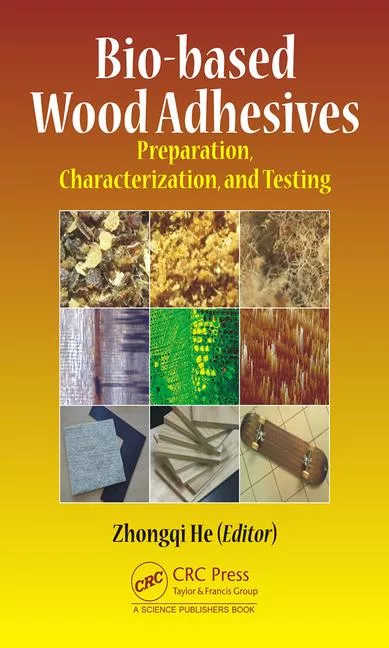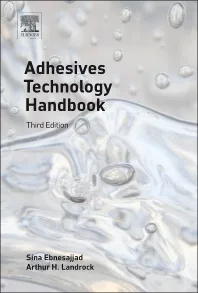Greener Natural Latex Adhesives

The term “green” is often associated with natural rubber latex (NRL). This material is extracted from the Para rubber tree and is free of volatile organic compounds (VOCs). NRL-based waterborne adhesives are commercially available at approximately 60% solids. They are widely used for carpet backing and installation; specialty paper (envelopes/labels); flooring and tile bonding; food and medical packaging; custom and stock napkin and shirt bands; currency straps; foam fabricating; and shoe adhesive.
NRL adhesives are commonly formulated with thickeners, such as cellulose and PVA; tackifiers, such as aqueous dispersions of hydrocarbon tackifiers or high-boiling hydrocarbon solvents; inorganic fillers; and alkali viscosity stabilizers. In addition, fungicides are frequently included to prevent bacterial attack.
Medical science has shown that the allergenic proteins in NRL can be harmful, with exposure potentially causing debilitating and even deadly allergic reactions. In 2004, the U.S. Consumer Product Safety Commission denied petition HP00-2 requesting a rule declaring NRL to be a strong sensitizer. However, the Honorable Thomas H. Moore (Commissioner) said, “Nevertheless, it would behoove manufacturers of natural rubber latex to take steps to reduce the level of proteins that consumers can come into contact with, whether or not the end product is a medical device.”1
Research has shown that allergy may play a role in the pathogenesis of autism. Allergic immune responses to some proteins (e.g., natural-latex and dietary proteins) may induce the production of brain auto-antibodies, which are found in many autistic children. The study was conducted to investigate the frequency of allergic manifestations in autistic children - specifically the relationship between allergy and disease characteristics in terms of disease severity; clinical findings and electroencephalography abnormalities were also studied. Fifty autistic children (30 with mild-to-moderate autism and 20 with severe autism) were studied and compared to a control group of 50 age-and-sex-matched children without neuro-psychiatric manifestations. Clinical evaluation was done with special emphasis on neuro-psychiatric assessment and clinical manifestations of allergy. Serum total immunoglobulin E was measured in all studied subjects. In addition, electroencephalograph and assessment of mental age were done for all autistic children.
Allergic manifestations (bronchial asthma, atopic dermatitis and/or allergic rhinitis) were found in 52% of autistic patients. This frequency was significantly higher than that of controls (10%; P < 0.001). There was a significant positive association between the frequency of allergic manifestations and disease severity - important clinical findings elicited in some autistic children (gastrointestinal symptoms and neurological manifestations) and electroencephalograph abnormalities. The research showed an increased frequency of allergic manifestations in autistic children. The significant positive association between these manifestations and important disease characteristics (disease severity, gastrointestinal symptoms, neurological findings, and electroencephalograph abnormalities) may shed light on the possible causal role of allergy in some autistic children. Hence, we need to know more about the links between allergy, the immune system and the brain in autism. This is important to determine whether therapeutic modulation of immune function and allergic diseases are legitimate avenues for novel therapy in selected cases of autism, or even for attempted primary prevention in genetically at-risk subgroups.2
In the book Silent Spring, wildlife biologist Rachel Carson writes that man-made chemicals like pesticides that have become universally common or repetitive can assume “the harmless aspect of the familiar.”3 Similarly, the allergenic proteins in natural-latex adhesives, some of which are suspected to be natural insecticides, have attained the harmless aspect of the familiar. Although many of the allergenic hazards of natural-latex adhesives are well understood, exploitation and a comfortable dependence on such a material continue to affect the incidence of latex allergies.
Most recently, forward-thinking companies have developed effective protein degradative or extractive methods in an effort to provide ultra-low-protein natural latex. A Duluth, GA-based biotechnology company significantly removes proteins from Hevea brasiliensis NRL through an extraction technology. Specifically, Vystar Corp. provides Vytex® NRL as a standardized source material for the production of NRL-based adhesives using chemically modified Hevea brasiliensis natural latex with significantly reduced antigenic protein content.
This protein extraction method is achieved by adding aluminum hydroxide, which is well known for its protein-binding characteristics. The insoluble aluminum hydroxide-protein complex is separated from the aqueous natural-latex dispersion by filtration or centrifugation to provide an ultra-low-protein Hevea brasiliensis natural-latex product. This NRL has dramatically reduced antigenic protein values up to 99% over standard Hevea brasiliensis natural-latex.
The multi-patented extractive process effectively removes proteins to virtually undetectable levels as determined by independent testing using two ASTM methodologies: Modified Lowry (ASTM D 5712) for total proteins, and ELISA (ASTM D 6499), which measures antigenic protein levels. Over 500 medical and non-medical products made with this product have been independently tested using accredited ASTM protein test methodologies.
This ultra-low-protein material consistently contains less than 10µg/dm2 of antigenic protein in unleached cast films - the level considered safe by organizations setting industry standards, including the Malaysaian Rubber Export Promotion Council SMG Certification Program (less than than 50µg/dm2 of antigenic protein for powder-free gloves) and the Association of Peri-Operative Registered Nurses (AORN) 2004 Latex Guidelines, which defines a latex-safe environment if the product protein content is less than 50µg/dm2 of antigenic protein using the ASTM D 6499 antigen test.4
Some of the performance benefits of ultra-low-protein natural rubber latex adhesives include:
- Bonding characteristics equal or superior to standard latex
- Very low dried film odor
- Greater clarity and whiteness
- Improved processing and shelf stability
The adhesive industry continues to develop new technologies and products providing greener adhesives with reduced hazardous ingredients. While product safety, health and environmental benefits that achieve green standards are important to everyone, the performance of any new raw material is essential to its approval.5
For more information on natural rubber, visit www.vytex.com.
Links
Looking for a reprint of this article?
From high-res PDFs to custom plaques, order your copy today!





